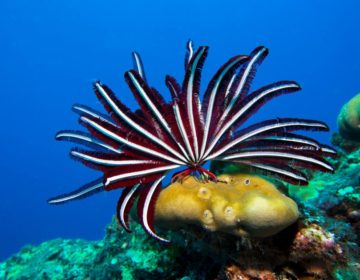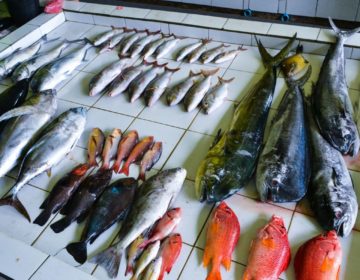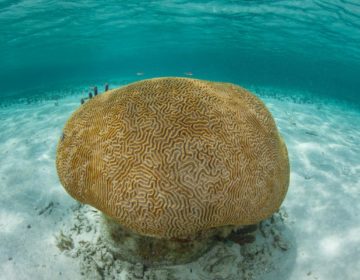Over the past century, island biodiversity across the globe has been subjected to extreme pressure due to habitat change, over-exploitation, invasion by alien species and more importantly climate change and pollution. It is common knowledge that small island countries are ecologically fragile and are more vulnerable to such challenges. The Maldives is no exception to this. Natural habitats and biodiversity of most tropical islands are increasingly impacted by cyclones, storms and hurricanes associated with climate change. Recent estimates show that of the 724 animal extinctions recorded worldwide in the last 400 years, about half were island species (UN, 2014). However, such global estimates on plant species are not available for want of data. This indicates that basic information on the flora and fauna of an area is mandatory to evaluate species losses due to environmental challenges and to mitigate damages due to future threats.

The landscape of the Maldives forms the major chunk and biodiversity rich central portion of the Lakshadweep-Maldives-Chagos Archipelago in the Indian Ocean. The chain of 26 atolls lies on the crest of a 1600 km long submarine mountain range with live coral reef of underwater gardens and provides a home to hundreds of species varying in shape, size, colour and diversity – a unique combination of marine and terrestrial biota. Vegetation and other ecological features vary between islands from north to south in Maldives. Moreover, these aspects vary between exterior and interior islands in various atolls since the exterior one is more subjected to oceanic currents compared to the latter. The characteristics of the foreshore area also influence the ecology and vegetation of islands.
Though the vegetation of Maldives is continuously subjected to harsh climatic and environmental factors, profuse growth of trees, some of which may even reach heights of up to 30m , indicates the uniqueness of the Island’s terrestrial vegetation. Tall trees such as Ficus, Casuarina and Coconut are very common in most of the islands. Large mangrove trees are characteristic of some of the northern islands. Prolific growth of Scaevola, a secondary species, is a special feature of most of the agriculture islands irrespective of inhabitation. Despite the tropical climate providing ideal conditions for luxuriant growth, factors such as salinity, soil alkalinity and salt-laden winds contribute to variations in the morphology of plants in Maldives compared to that in the mainland. In general, the diversity of terrestrial flora is low because of the uniform topography, soil and climate. However, the islands support extremely rich coastal vegetation.
Agriculture
The Maldives is the land of coconut, which forms part of the natural vegetation and agriculture in the country. Taros and other leafy vegetables are the major indigenous crops cultivated as part of traditional agriculture. The Maldivians usually preserve a small area of forest in one portion of the inhabited islands. These forests act as bio-shields and help to conserve the native biodiversity and provide ecosystem services to the islanders to a certain extent. The Islanders cultivate a wide variety of crops in their homesteads such as chilly, sweet potato, pineapple, sugarcane, almond, moringa, millet, corn, breadfruit, mango, papaya, lime, banana, pumpkins, watermelon, cucumber, crucifers, taro, arecanut and pepper, majority of which were introduced from other countries. A large number of species was also introduced for horticultural purposes, avenue planting and gardening. Hence, the Maldivian flora is composed of a large number of exotic species.
 Breadfruit
Breadfruit
Phyto-geography and Vegetation
The climate of Maldives is tropical – warm and humid since the Islands are spread around the equatorial region. The floristic region falls under the broad Indo-Pacific biogeographic province with phytogeographical similarities. The typical physiography of Maldives supports rich coastal flora and the natural vegetation can be broadly classified as tropical coastal forest with variations in microhabitats which give rise to edaphic types. Microhabitats and floristic associations vary from southern to the northern islands. Foreshore or sandy vegetation is mainly composed of herbaceous flora with creepers which may or may not be inundated during the high tides. Certain foreshore areas are devoid of any vegetation because of the hard, calcareous substratum. The backshore and inland vegetation vary according to physiography and sometimes in a contiguous pattern. Certain micro-habitat associations are noticed along the shore-crest and inland regions. Though the aggregation of Scaevola is an indicator of disturbed habitats, it forms plant associations with Pandanus and Guettarda both in shore-crest and inland. In certain areas, the plant forms a long strip of thick vegetal cover over the beach-crest.
 Scaevola
Scaevola
The other major plant association in the shore-crest is Pemphis-Suriana, mainly in foreshore areas with coral sand, rubbles, reef rock, coral conglomerate beach rock or hard pan coral. Thespesia-CordiaCalophyllum, Cordia-Pisonia-Talipariti and Scaevola-Tournefortia-Guettarda also form plant communities in this area. The vegetation of the inner islands is unique and composed of a number of edaphic types. In general, most of the areas support rich growth of trees and shrubs which occur either in pure or mixed stands. Cocos nucifera (coconut palm) is the major component of the tree vegetation. Large trees of Ficus benghalensis occur in almost all the islands. Densely crowned Artocarpus altilis trees bearing fruits is the characteristic feature of the Maldivian homesteads.
 Cocos nucifera (coconut palm)
Cocos nucifera (coconut palm)
A notable feature of some of the southern islands is the formation of large fresh water lakes, wetlands and lagoons. Traditionally, some of the wetlands are used for taro cultivation. Small ponds with brackish water and large strips of mangrove vegetation along the coast are also peculiar to the southern islands. The large extent of pure mangrove stands is characteristic of the northern islands and these islands are also noted for their floristic richness and diversity. Luminitzera racemosa, Bruguiera cylindrica and B. gymnorhiza are the dominant species in most of the mangrove habitats and each of them forms separate and distinct patches. Large trees of Sonneratia and Bruguiera are also common in mangrove habitats of northern islands. Bruguiera cylindrica is the most common true mangrove in Maldives and it occurs throughout the islands from north to south.
 Luminitzera racemosa
Luminitzera racemosa
The occurrence of large extents of Luminitzera, pure strands of Flagellaria and tall trees of Sonneratia and Bruguiera indicates the uniqueness of the mangrove habitats in Maldives compared to the other parts of south Asia. The other major tree associations in the inner areas of islands include Cocos-Pandanus, Pemphis-Suriana-Pandanus, Guertadia-Talipariti-Th espesia, CalophyllumBarringtonia and Hernandia-Cordia-Pisonia. The terrestrial flora and vegetation of the islands in the southern and northern atolls are much richer compared to the central region. Many of these biodiversity-rich habitats, which occur mainly in the inhabited island group, call for special conservation measures.
 Cocos-Pandanus
Cocos-Pandanus
Exotic and Invasive Alien Plants
The islands of Maldives hold the potential for conservation and restoration of tropical coastal habitats. However, a large number of exotic and invasive plants pose threat to the natural ecosystems of the Island and affects its economy. A rough estimate shows that more than 60 percent of the flora of Maldives is composed of exotic species and some of these species have become invasive. Since the affected islands are mostly small in size, the pattern of invasion is different compared to that in other tropical habitats. Open lands and abandoned agricultural areas provide suitable habitats for the establishment and spread of invasive species. Import of various agricultural commodities, timber, horticultural species, animals, animal products and organic manure without observing proper quarantine measures serve as the major pathway for invasion.
Untreated packaging materials which fail to comply with the International Standards of Phytosanitary Measures also promote invasion by alien flora and fauna. The major invasive plants observed in Maldives include Wollastonia biflora, Cassytha filiformis and Lecuaena leucocephala, which pose serious threat to the native flora. Wollastonia forms impenetrable thickets in many of the inhabited islands, especially in the open areas, while Cassytha is parasitic on almost all groups of plants. Other alien species such as Prosopis juliflora, Lantana camara, Sphagneticola trilobata and Bidens pilosa have already established and are in the spreading phase. These plants threaten the fragile ecosystem of the Island and impacts on the livelihood and economy of the people.
 Wollastonia biflora
Wollastonia biflora
Prevention of invasion or at the best early detection and rapid control are the most suitable options to avoid damages due to invasive alien species. However, lack of awareness on the damages due to invasive species and the difficulty in distinguishing between alien and native species frustrate implementation of these options in Maldives.
Source: Common Plants of the Maldives by P. Sujanapal K. V. Sankaran
(Published by Food and Agriculture Organization of the United Nations and Kerala Forest Research Institute)



